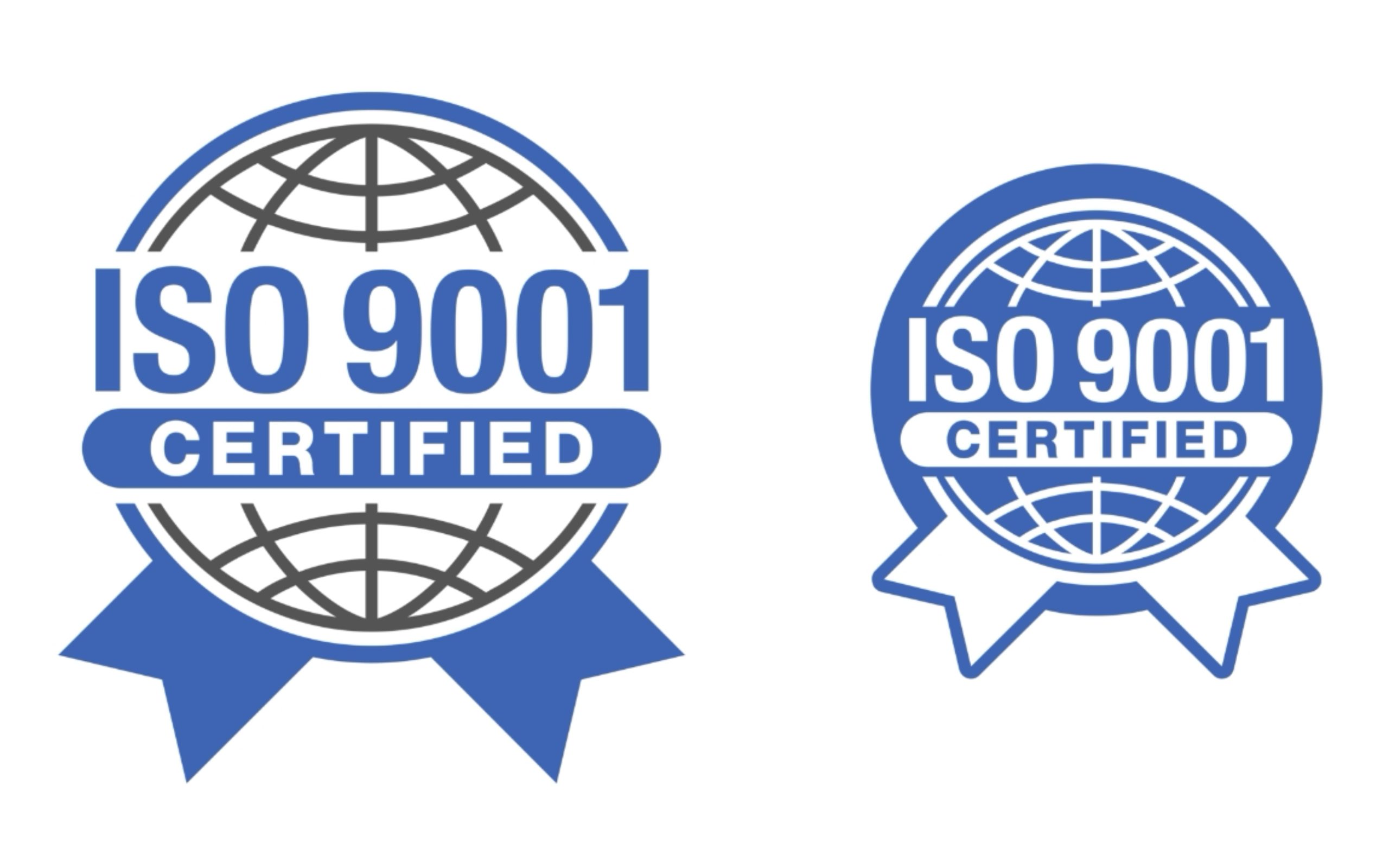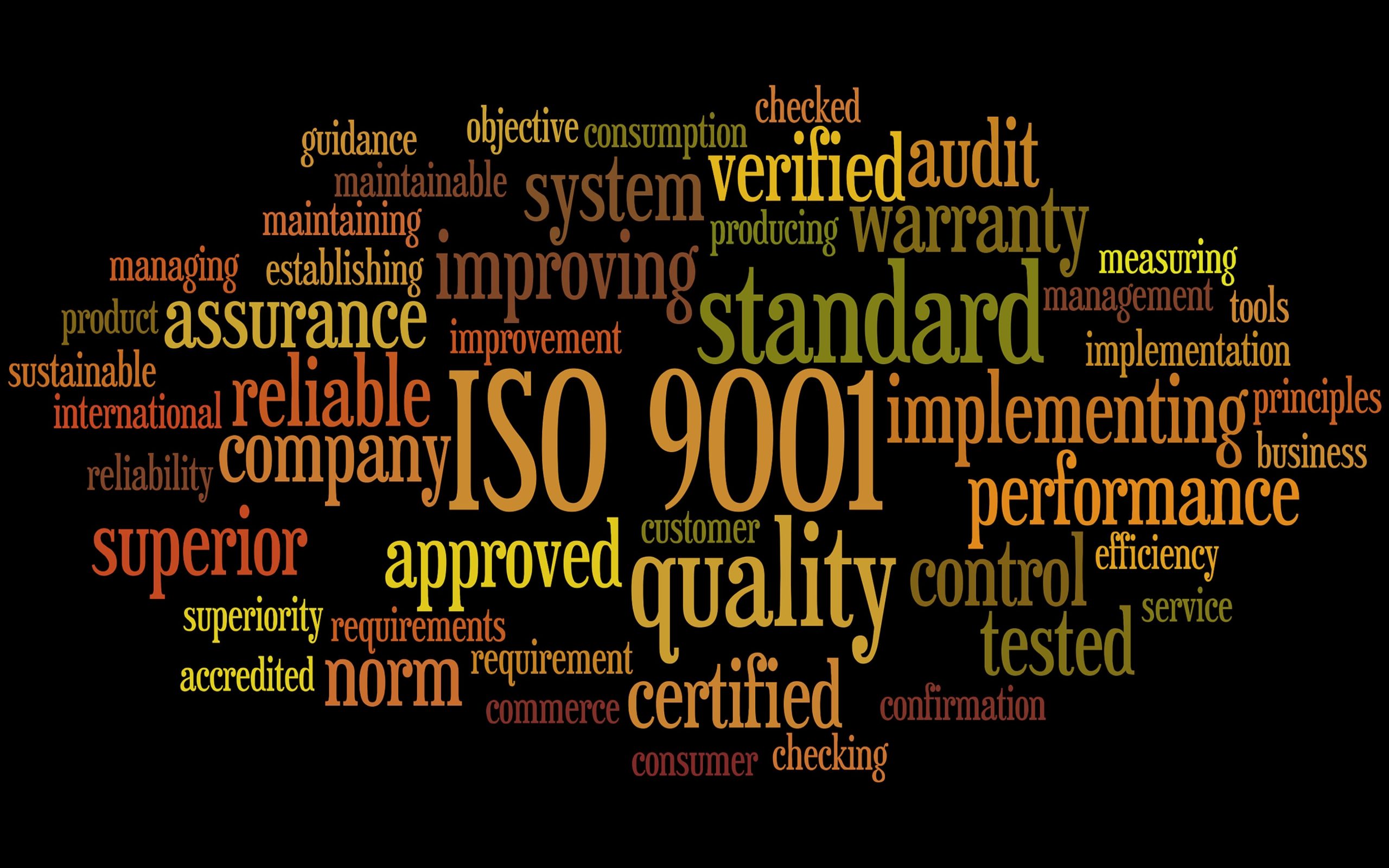Oktober 9, 2024

Im Zuge der wirtschaftlichen Globalisierung werden die wirtschaftlichen Beziehungen zwischen den Ländern der Welt immer enger, und der internationale Handel nimmt zu. Das verarbeitende Gewerbe ist eine wichtige Säule der Volkswirtschaften verschiedener Länder und steht vor noch nie dagewesenen Chancen und Herausforderungen. In den verarbeitenden Industrien der verschiedenen Länder gibt es große Unterschiede bei den Produktionsverfahren, der Produktqualität, den Sicherheitsstandards usw., und diese Unterschiede sind zu Hindernissen für den internationalen Handel geworden. Um diese Hindernisse zu beseitigen und den reibungslosen Ablauf des Welthandels zu fördern, ist es unumgänglich, einheitliche Normen festzulegen. Im Folgenden werde ich die Geschichte und Bedeutung der ISO vorstellen.
Formulierung und Entwicklung von ISO-Normen
Hintergrund der Herkunft
Der Vorgänger der ISO geht auf die Internationale Elektrotechnische Kommission (IEC) zurück. Zu Beginn des 20. Jahrhunderts, als sich die Elektrotechnik rasant entwickelte und weit verbreitet war, herrschte in den verschiedenen Ländern ein Chaos bei der Formulierung von Normen für elektrische Produkte. Um dieses Problem zu lösen, wurde die Internationale Elektrotechnische Kommission ins Leben gerufen, die sich der Formulierung einheitlicher elektrotechnischer Normen verschrieben hat. Mit der fortschreitenden Integration der Weltwirtschaft ist es jedoch nicht mehr möglich, den Bedarf durch eine einfache Regulierung des elektrischen Bereichs zu decken. Im Jahr 1947 wurde die Internationale Organisation für Normung (ISO) formell gegründet, um einheitliche Normen für ein breiteres Spektrum von Bereichen zu formulieren, die alle Aspekte von Herstellung, Handel, Technologie und Dienstleistungen abdecken.
Mechanismus der Formulierung
Die Ausarbeitung von ISO-Normen ist ein komplexer und strenger Prozess, an dem viele Länder und Organisationen beteiligt sind. Zunächst schlagen die Normungsgremien verschiedener Länder Vorschläge für die Formulierung von Normen vor, die auf ihren eigenen industriellen Bedürfnissen und technologischen Entwicklungen basieren. Diese Vorschläge werden den zuständigen technischen Ausschüssen der ISO vorgelegt. Die technischen Ausschüsse setzen sich aus Experten aus verschiedenen Ländern zusammen, die die Vorschläge eingehend untersuchen und diskutieren. Während der Diskussion müssen die Experten die Interessen der verschiedenen Länder und Branchen abwägen. So haben beispielsweise die Industrieländer in bestimmten Bereichen der Spitzentechnologie Vorteile und hoffen, dass die Normen ihr technologisches Niveau widerspiegeln können, während die Entwicklungsländer eher auf die Durchführbarkeit und Kosteneffizienz der Normen achten, um sicherzustellen, dass ihre Unternehmen die Anforderungen der Normen erfüllen können.
Um eine einheitliche Norm zu erreichen, wird der technische Ausschuss mehrere Konsultations- und Abstimmungsrunden durchführen. In diesem Prozess werden alle Parteien ihre Ansichten und Forderungen umfassend zum Ausdruck bringen, und durch kontinuierliche Kompromisse und Anpassungen wird schließlich ein Normentwurf entstehen, der von den meisten Ländern akzeptiert werden kann. Der Entwurf durchläuft die Phase der öffentlichen Bekanntgabe und der Einholung von Stellungnahmen, wobei die Rückmeldungen aller Parteien berücksichtigt und Überarbeitungen und Verbesserungen vorgenommen werden. Nach der Abstimmung durch die ISO-Mitgliedsländer wird die Norm schließlich offiziell veröffentlicht und eingeführt.
Spezifische Anwendung und Auswirkungen von ISO-Normen in verschiedenen Bereichen
Kernbereiche der Produktion
Nehmen wir als Beispiel die mechanische Fertigung, in der die ISO-Normen eine entscheidende Rolle spielen. In Bezug auf die Produktionsprozesse regeln die ISO-Normen jedes Glied von der Rohstoffbeschaffung bis zur Auslieferung des fertigen Produkts. In den Normen für die Qualitätsprüfung von Rohstoffen werden beispielsweise die chemische Zusammensetzung, die physikalischen Eigenschaften und andere Indikatoren verschiedener metallischer Werkstoffe geklärt, um die Qualitätsstabilität von Rohstoffen zu gewährleisten. In Bezug auf die Verarbeitungstechnologie werden die Präzisionsanforderungen und Betriebsspezifikationen verschiedener mechanischer Verarbeitungsmethoden festgelegt, um die Konsistenz und Zuverlässigkeit der Produkte zu verbessern. In Bezug auf die Produktqualität und -sicherheit legen die ISO-Normen strenge Prüfstandards und Sicherheitsspezifikationen fest. So sind beispielsweise für Schlüsselkomponenten mechanischer Produkte Leistungsindikatoren wie Festigkeit und Haltbarkeit sowie entsprechende Prüfverfahren vorgeschrieben, um sicherzustellen, dass es bei der Verwendung des Produkts nicht zu Sicherheitsunfällen kommt.
Vergleicht man die Veränderungen in der Qualität und Wettbewerbsfähigkeit von Fertigungsprodukten in verschiedenen Ländern vor und nach der Einführung der ISO-Normen, so wird die positive Wirkung der ISO-Normen deutlich. Vor der Einführung der Normen war die Wettbewerbsfähigkeit der Produkte der mechanischen Fertigung in einigen Ländern auf dem internationalen Markt aufgrund der uneinheitlichen Qualität schwach. Nach der Einführung der ISO-Normen haben die Unternehmen durch die Optimierung der Produktionsprozesse und die Verbesserung der Produktqualität allmählich Anerkennung auf dem internationalen Markt erlangt. Das Exportvolumen der Produkte ist erheblich gestiegen, und auch das Markenimage hat sich verbessert.

Standardisierte Fertigung
Aufstrebende Technologiefelder
Mit der rasanten Entwicklung von Wissenschaft und Technik haben neue Technologiebereiche wie elektronische Produkte, künstliche Intelligenz und neue Energien auch neue Herausforderungen und Anforderungen an die ISO-Normen gestellt. Im Bereich der Elektronikprodukte müssen sich die ISO-Normen ständig an die rasche Ersetzung von Elektronikprodukten anpassen. Beispielsweise sollten ISO-Normen für mobile Geräte wie Smartphones nicht nur deren Hardware-Leistungsindikatoren wie Chipverarbeitungsleistung und Akkulaufzeit regeln, sondern auch Softwarekompatibilität und Sicherheit berücksichtigen. Im Bereich der künstlichen Intelligenz ist die Formulierung von ISO-Normen aufgrund der Komplexität und Ungewissheit der Technologie relativ rückständig. Gegenwärtig liegt das Hauptaugenmerk auf der Ethik und der Datensicherheit der künstlichen Intelligenz, um eine gesunde Entwicklung der Technologie der künstlichen Intelligenz zu gewährleisten. Im Bereich der neuen Energien regeln die ISO-Normen die Leistungs-, Qualitäts- und Sicherheitsstandards von Produkten wie Solarzellen und Windturbinen und fördern die Skalierung und Standardisierung der neuen Energieindustrie.
ISO-Normen haben sowohl eine fördernde Wirkung auf die innovative Entwicklung aufstrebender Technologiebranchen, können aber auch gewisse Beschränkungen mit sich bringen. Einerseits gibt das Vorhandensein von Normen den Unternehmen klare F&E-Richtungen und -Ziele vor und verhindert so die Blindheit der Unternehmen im Prozess der technologischen F&E. Gleichzeitig begünstigen einheitliche Normen auch den technischen Austausch und die Zusammenarbeit zwischen verschiedenen Unternehmen und fördern die Verbreitung und Innovation von Technologien. Sind die Normen hingegen zu streng oder werden sie zu spät aktualisiert, können sie das innovative Denken und den Innovationsraum der Unternehmen einschränken und so technologische Durchbrüche behindern.
Spezielle Industriebereiche
In der Medizinbranche spielen die ISO-Normen eine unersetzliche Rolle bei der Gewährleistung der Qualität und Zuverlässigkeit von Medizinprodukten. Medizinprodukte stehen in unmittelbarem Zusammenhang mit dem Leben und der Gesundheit von Patienten, weshalb die ISO-Normen strenge Anforderungen an alle Aspekte der Entwicklung, Herstellung und Prüfung von Medizinprodukten stellen. So müssen beispielsweise bei der Auswahl der Materialien für Medizinprodukte ungiftige, unbedenkliche und biokompatible Materialien verwendet werden; im Produktionsprozess müssen die Sterilität und Sauberkeit der Produktionsumgebung gewährleistet und die Parameter des Produktionsprozesses streng kontrolliert werden; bei der Inspektion müssen die Leistung und Sicherheit der Medizinprodukte umfassend geprüft werden, um sicherzustellen, dass sie den Anforderungen des klinischen Einsatzes entsprechen. Durch die strikte Anwendung dieser Normen wird die Sicherheit der Patienten gewährleistet und die Qualität der medizinischen Versorgung verbessert.
Für die Lebensmittelindustrie stellen die ISO-Normen besondere Anforderungen und spielen eine wichtige Rolle bei der Lebensmittelsicherheit und Qualitätskontrolle. Die ISO-Normen decken den gesamten Prozess der Lebensmittelherstellung ab, vom Anbau und der Aufzucht von Rohstoffen bis hin zur Verarbeitung, Verpackung, Lagerung und zum Transport von Lebensmitteln. Bei den Rohstoffen müssen die Rückstände von Pestiziden und Tierarzneimitteln in den landwirtschaftlichen Erzeugnissen streng kontrolliert werden; bei der Verarbeitung wird die Verwendung von Lebensmittelzusatzstoffen geregelt, um den Nährstoffgehalt und den Geschmack der Lebensmittel zu gewährleisten; bei der Verpackung und Lagerung müssen Verpackungsmaterialien verwendet werden, die den Lebensmittelsicherheitsstandards entsprechen, und die Temperatur, die Luftfeuchtigkeit und andere Lagerbedingungen müssen kontrolliert werden, um zu verhindern, dass Lebensmittel verderben. Durch die Umsetzung der ISO-Normen wird die Lebensmittelsicherheit wirksam gewährleistet und das Vertrauen der Verbraucher in Lebensmittel gestärkt.

ISO:9001-Qualitätsmanagementsystem-Normen
Der Wert und die Herausforderungen von ISO-Normen für Unternehmen
Wettbewerbsvorteil
Nach Erhalt der ISO-Zertifizierung können die Unternehmen die Produktqualität und -konsistenz verbessern, indem sie die Produktionsprozesse streng nach den ISO-Normen optimieren. Ihre Produkte werden von internationalen Kunden anerkannt, und ihr Marktanteil hat sich schrittweise erhöht. Daher können sie oft erhebliche Wettbewerbsvorteile auf dem internationalen Markt erlangen. Gleichzeitig ist die ISO-Zertifizierung zu einem wichtigen Bestandteil des Markenimages geworden, der die Glaubwürdigkeit und den Ruf der Unternehmen auf dem internationalen Markt stärkt.
Für viele multinationale Unternehmen ist die ISO-Zertifizierung eine der wichtigsten Voraussetzungen für die Auswahl von Lieferanten. Daher können Unternehmen die ISO-Zertifizierung als Sprungbrett für den Einstieg in die internationale High-End-Lieferkette nutzen. In der Automobilindustrie beispielsweise bevorzugen große Automobilhersteller bei der Auswahl von Zulieferern Unternehmen, die eine ISO-Zertifizierung besitzen. Denn durch die ISO-Zertifizierung kann sichergestellt werden, dass die Qualität der von den Zulieferern gelieferten Teile den Anforderungen entspricht, wodurch die Qualität und Sicherheit des gesamten Fahrzeugs gewährleistet wird.
Verbesserung der internen Verwaltung
ISO-Normen können nicht nur die externe Wettbewerbsfähigkeit von Unternehmen steigern, sondern auch die Unternehmen dazu veranlassen, interne Managementprozesse zu optimieren und die Produktionseffizienz und Ressourcennutzung zu verbessern. Bei der Umsetzung der ISO-Normen müssen die Unternehmen die internen Organisationsstrukturen, Aufgabenbereiche, Arbeitsabläufe usw. umfassend klären und optimieren. Durch die Klärung der Zuständigkeiten und Befugnisse der einzelnen Abteilungen wird beispielsweise das Phänomen des "Buck-passing" zwischen den Abteilungen verringert und die Arbeitseffizienz verbessert. Gleichzeitig verlangen die ISO-Normen von den Unternehmen, die verschiedenen Ressourcen im Produktionsprozess sinnvoll zuzuordnen und effektiv zu nutzen, die Ressourcennutzung zu verbessern und die Produktionskosten durch die Optimierung der Produktionspläne, den Abbau von Lagerbeständen und andere Maßnahmen zu senken.
Herausforderungen und Antworten
Auch bei der Umsetzung von ISO-Normen stehen die Unternehmen vor vielen Herausforderungen. Die erste ist die Frage der finanziellen Mittel. Die Umsetzung von ISO-Normen erfordert von den Unternehmen eine gewisse Investition in die Anschaffung der entsprechenden Ausrüstung, die Schulung der Mitarbeiter und die Einstellung von Beratern. Für einige kleine und mittlere Unternehmen kann dies eine erhebliche Ausgabe darstellen. Zweitens gibt es Herausforderungen im Hinblick auf die Humanressourcen. Die Umsetzung der ISO-Normen erfordert die aktive Beteiligung und Mitarbeit aller Mitarbeiter des Unternehmens, was entsprechende Kenntnisse und Fähigkeiten voraussetzt. Daher müssen die Unternehmen viele Schulungen für ihre Mitarbeiter durchführen, um deren Qualität und Fähigkeiten zu verbessern. Schließlich gibt es auch Herausforderungen im Bereich der Technologie. Mit der kontinuierlichen Entwicklung von Wissenschaft und Technik werden auch die ISO-Normen ständig aktualisiert und verbessert. Die Unternehmen müssen die Änderungen der Normen ständig verfolgen und sich ihnen anpassen, was bestimmte technische Forschungs- und Entwicklungskapazitäten sowie Innovationsfähigkeiten voraussetzt.
Angesichts dieser Herausforderungen wenden erfolgreiche Unternehmen oft eine Reihe von wirksamen Strategien an. Was die finanziellen Mittel betrifft, so können Unternehmen Finanzierungsprobleme lösen, indem sie ihre Budgets vernünftig aufstellen, sich um staatliche Zuschüsse bemühen und mit anderen Unternehmen zusammenarbeiten. Was die Humanressourcen betrifft, so können Unternehmen Pläne für die Mitarbeiterschulung aufstellen, die Mitarbeiter regelmäßig zu Schulungen einladen und sie ermutigen, zu lernen und sich zu verbessern. Gleichzeitig können die Unternehmen auch externe Talente einbeziehen, um das Talentteam des Unternehmens zu bereichern. Im technologischen Bereich können die Unternehmen die Zusammenarbeit mit wissenschaftlichen Forschungseinrichtungen und Universitäten verstärken, gemeinsam neue Technologien entwickeln, Änderungen der Normen verfolgen und die Richtung der technologischen Forschung und Entwicklung der Unternehmen rechtzeitig anpassen.
ISO-Normen und globale Handelsstrukturen
Beseitigung von Handelshemmnissen
ISO-Normen spielen eine wichtige Rolle bei der Beseitigung von internationalen Handelshemmnissen. Im internationalen Handel werden Produkte aufgrund der uneinheitlichen Normen in den einzelnen Ländern oft nicht im Einfuhrland geprüft, was zu Handelshemmnissen führt. ISO-Normen vereinheitlichen Produktspezifikationen und Qualitätsanforderungen, so dass Produkte aus allen Ländern nach denselben Normen hergestellt und auf dem internationalen Markt verkauft werden können, wodurch technische Hindernisse im internationalen Handel abgebaut werden. Wenn z. B. im internationalen Handel mit mechanischen Produkten das Importland verlangt, dass das Produkt seinen Normen entspricht, und das Exportland andere Produktnormen hat, dann können die Produkte des Exportlandes möglicherweise nicht auf den Markt des Importlandes gelangen. Wenn alle Länder die ISO-Normen einhalten, wird der Verkehr von Produkten auf dem internationalen Markt reibungsloser verlaufen.
Verwenden Sie spezifische Handelsdaten, um den Beitrag der ISO-Normen zur Förderung des globalen Handelswachstums zu veranschaulichen. Einschlägigen Forschungsberichten zufolge hat das Handelsvolumen der weltweiten Industrieprodukte nach der weit verbreiteten Einführung von ISO-Normen einen klaren Wachstumstrend gezeigt.
Rolle bei der Formulierung von internationalen Handelsregeln
ISO-Normen haben auch einen wichtigen Einfluss und ein gewichtiges Wort bei der Formulierung internationaler Handelsregeln. Bei der Formulierung internationaler Handelsabkommen werden ISO-Normen oft als wichtige Referenz verwendet. So wurden beispielsweise bei der Formulierung der Regeln der Welthandelsorganisation (WTO) einige Klauseln der ISO-Normen in diese aufgenommen und wurden zu einer der grundlegenden Normen des internationalen Handels. Gleichzeitig haben ISO-Normen auch wechselseitige Beziehungen und Synergien mit anderen internationalen Handelsabkommen (wie den WTO-Regeln). So bieten beispielsweise die WTO-Regeln rechtliche Garantien für die Umsetzung der ISO-Normen, während die ISO-Normen technische Unterstützung für die konkrete Umsetzung der WTO-Regeln bieten.

Künftige Entwicklungstrends bei ISO-Normen
Anpassung an den wissenschaftlichen und technischen Fortschritt
Mit dem ständigen Fortschritt von Wissenschaft und Technik müssen auch die ISO-Normen ständig angepasst und aktualisiert werden. In Zukunft werden die ISO-Normen mit mehr Herausforderungen und Chancen konfrontiert sein. Angesichts der rasanten Entwicklung von Wissenschaft und Technologie (z. B. Quantencomputer, Genmanipulation usw.) müssen ISO-Normen im Voraus festgelegt werden, den Trend der wissenschaftlichen und technologischen Entwicklung vorhersagen und die entsprechenden Normen rechtzeitig formulieren. Im Bereich des Quantencomputers beispielsweise müssen ISO-Normen möglicherweise die Leistungsindikatoren, Algorithmenstandards, Datensicherheit und andere Aspekte von Quantencomputern regeln. Auf dem Gebiet der Genbearbeitung müssen der Anwendungsbereich, die Ethik, die Sicherheitsrisiken und andere Aspekte der Genbearbeitungstechnologie geregelt werden.
Um sicherzustellen, dass die ISO-Normen stets mit der Zeit Schritt halten und sich an neue Technologien und industrielle Veränderungen anpassen, müssen die ISO-Organisationen die Zusammenarbeit mit wissenschaftlichen Forschungseinrichtungen, Universitäten, Unternehmen und anderen Parteien verstärken. Durch die Zusammenarbeit können alle Parteien gemeinsam die Entwicklungstrends neuer Technologien untersuchen und den Bedarf für die Formulierung von Normen umgehend zurückmelden, so dass sich die ISO-Normen besser an die Anforderungen des wissenschaftlichen und technischen Fortschritts anpassen können.
Ausrichtung auf nachhaltige Entwicklung
Vor dem Hintergrund, dass sich die nachhaltige Entwicklung zu einem globalen Konsens entwickelt, werden sich auch die ISO-Normen in Richtung einer nachhaltigen Entwicklung entwickeln. In Zukunft werden die ISO-Normen die Normen und Leitlinien für eine nachhaltige Entwicklung wie Umweltschutz und soziale Verantwortung stärken. Im Hinblick auf den Umweltschutz können ISO-Normen strengere Anforderungen an die Kohlenstoffemissionen von Unternehmen, die Effizienz der Ressourcennutzung, die Abfallentsorgung und andere Aspekte stellen. Zum Beispiel können Unternehmen des verarbeitenden Gewerbes verpflichtet werden, die Kohlenstoffemissionen zu reduzieren, die Effizienz der Ressourcennutzung zu verbessern und umweltfreundliche Produktionsverfahren einzuführen. Im Hinblick auf die soziale Verantwortung können die ISO-Normen Anforderungen an den Schutz der Arbeitnehmerrechte, die Beteiligung an der Gemeinschaft, die Geschäftsethik und andere Aspekte stellen. So müssen Unternehmen beispielsweise die Löhne und Sozialleistungen ihrer Mitarbeiter garantieren, die Sicherheit der Arbeitsumgebung gewährleisten, sich aktiv an gemeinnützigen Aktivitäten beteiligen und sich an die Geschäftsethik halten.
Als Pass für die globale Fertigungsindustrie haben die ISO-Normen in den letzten Jahrzehnten die Entwicklung der Weltwirtschaft nachhaltig beeinflusst. Sie fördern nicht nur das Wachstum des Welthandels, verbessern die Produktqualität und -sicherheit, sondern fördern auch das interne Management und die Innovation von Unternehmen. Mit dem Fortschritt von Wissenschaft und Technik und der Verbreitung des Konzepts der nachhaltigen Entwicklung werden sich die ISO-Normen weiter entwickeln und eine wichtige Rolle in der Weltwirtschaft spielen.
Filter













